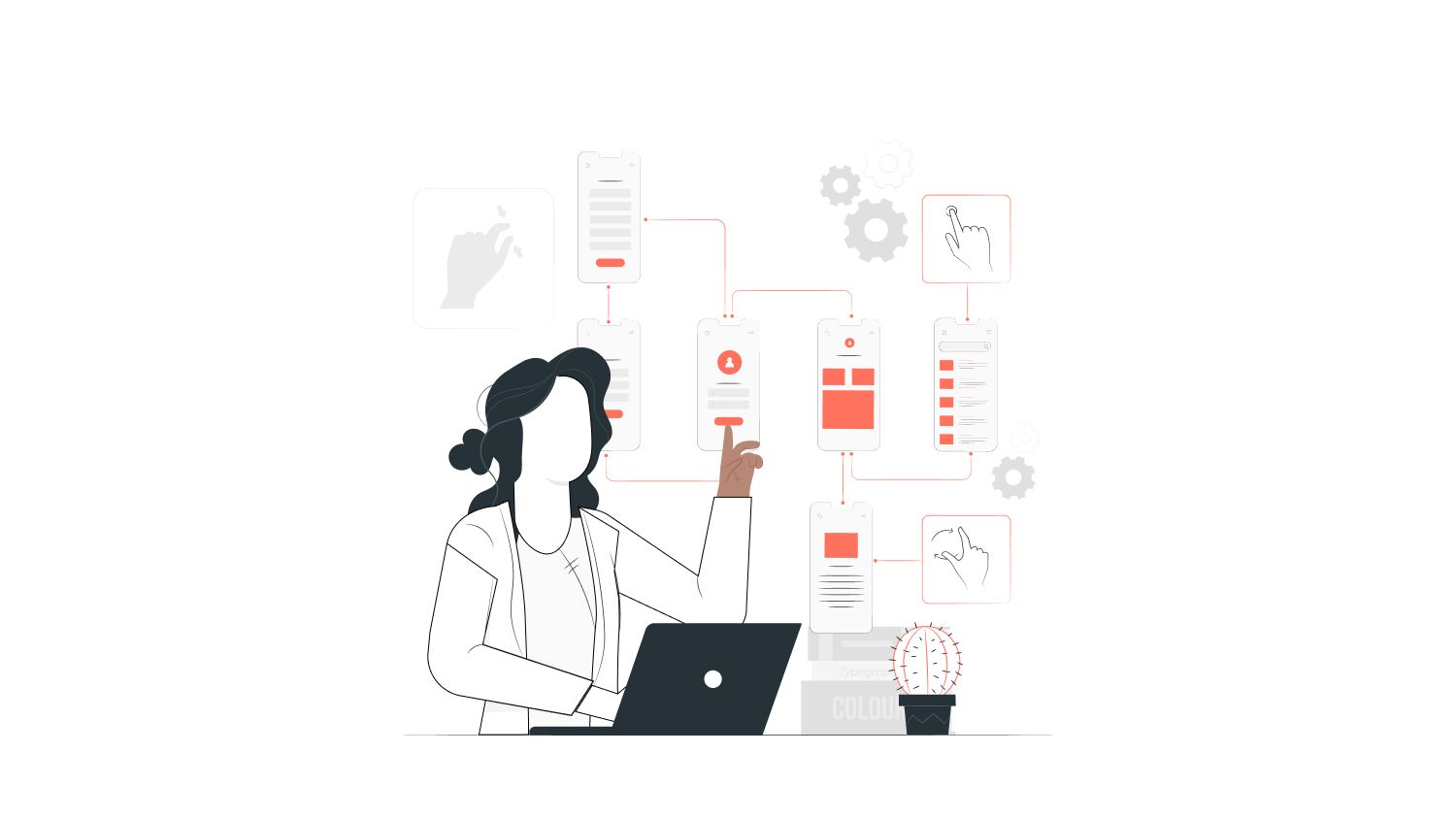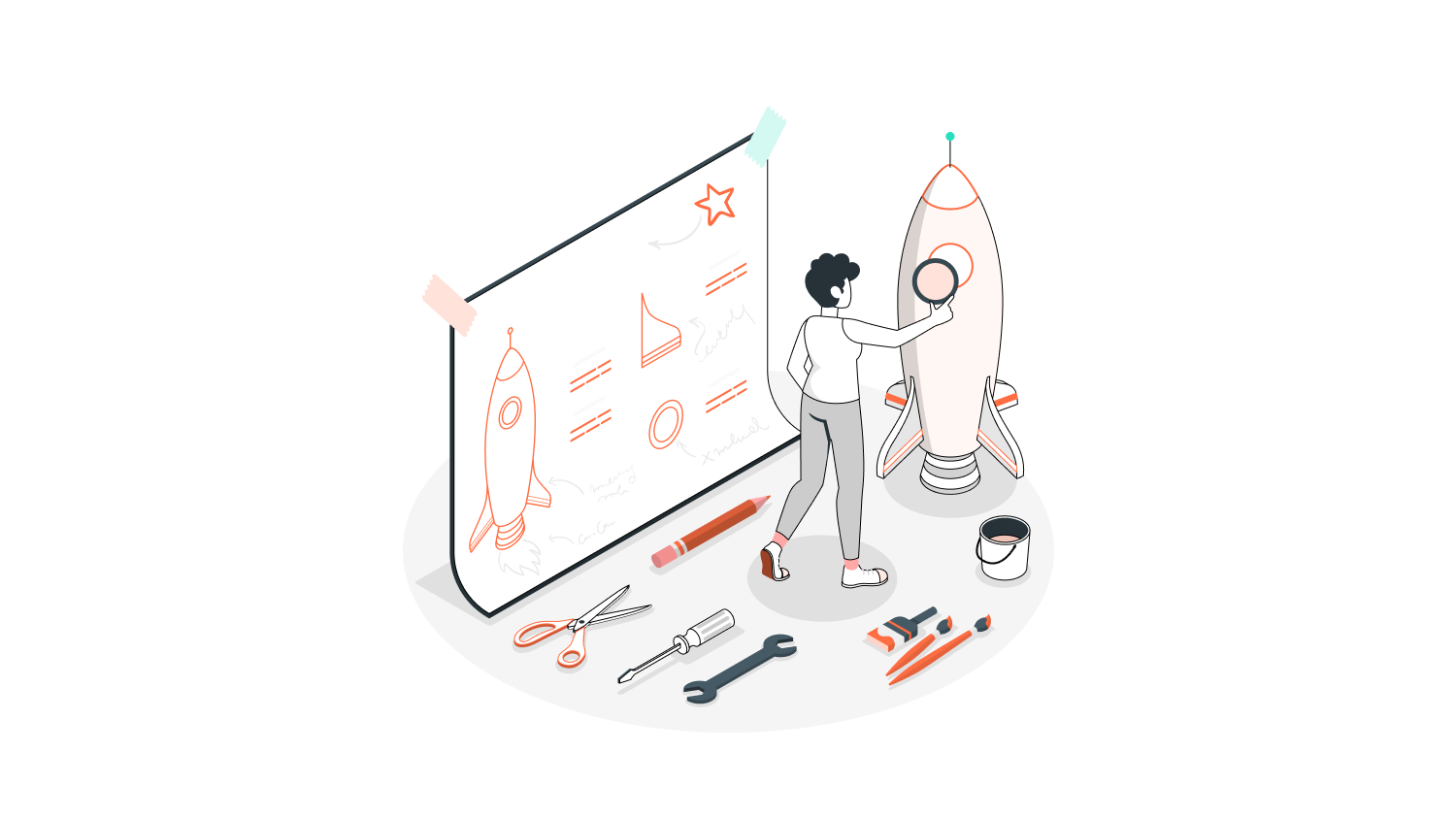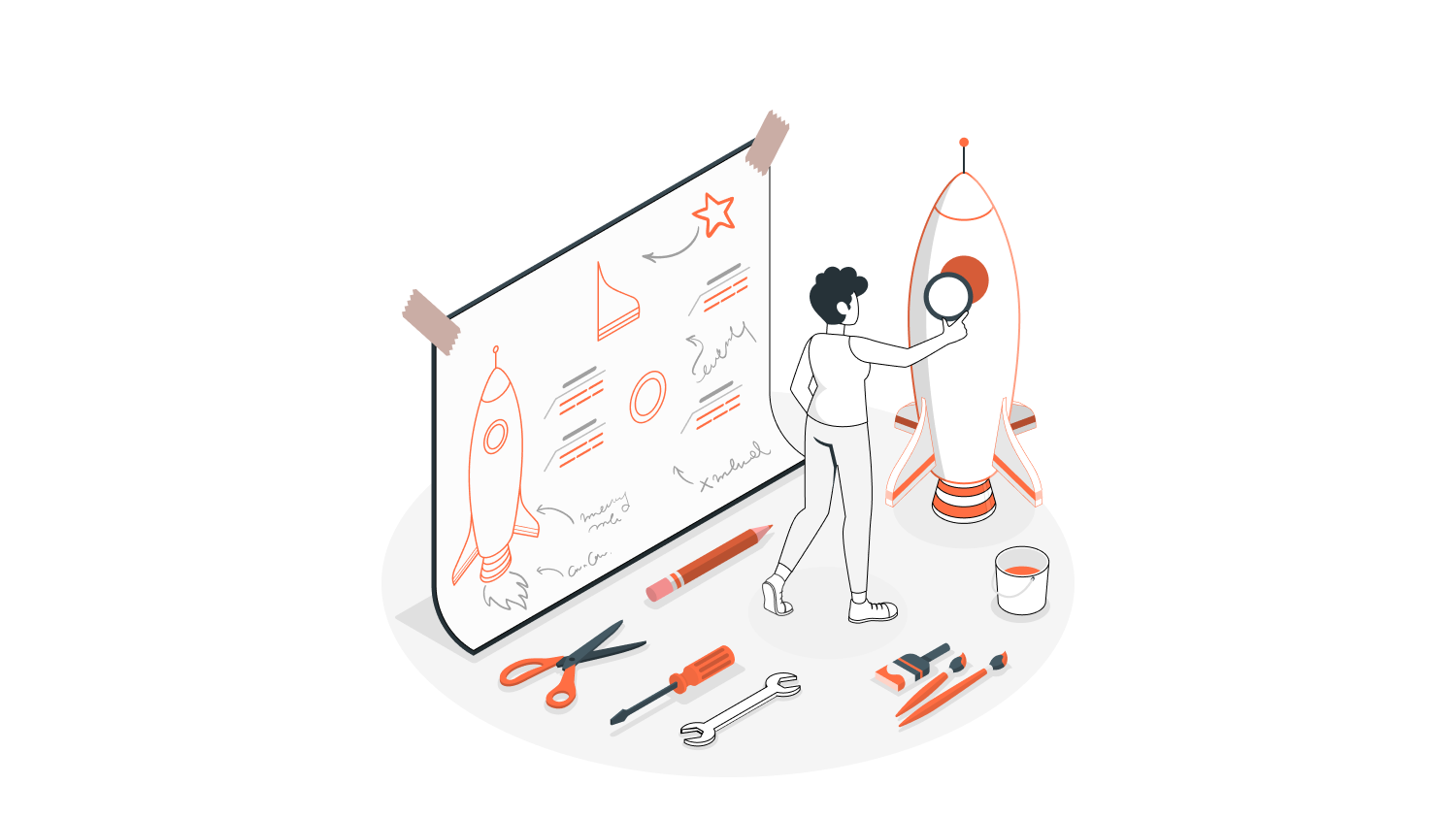Many startups fail because they assume that people need the product they offer.
What happens if you build a final market fit product, release it, and market it, and then you understand that people don’t care about the solution you provide.
It’s indeed painful. Certainly, you will lose money, resources, time, and confidence.
But you can solve this issue effectively by validating your product idea through a beta version of your product called MVP (Minimum Viable Product). It ensures that your product is in the right direction.
In this blog, we will discuss MVP, some successful real-life minimum viable product examples, and its advantages. It gives you an idea about the importance of creating an MVP before launching your final product.
Let’s dive right in!
What is MVP?
MVP stands for a minimum viable product. You can see two words- Minimum and viable, minimum stands for a few essential features, and viable signifies usability.
MVP means building a basic software product version with minimum features that provide a solution. It can be a basic version of the app before a final product, a website landing page, or an explainer video showing your product components.
In MVP, you build a basic version of the product, release it to your initial users, and collect feedback. With the help of the feedback received, you upgrade your MVP to a market fit product.
Many people confuse MVP with the prototype.
A prototype shows whether your idea can be turned into a product, but MVP shows whether your product really helps your target audience and what improvements you need.
Benefits of MVP
There are many reasons you should adopt MVP before developing your product.
It saves time, money, and resources and also guides the product in the proper direction to help you build a user-friendly, market fit product.
Minimum Viable Product helped many startups scale better with time and technology.
MVP helps you answer crucial questions like:
-
-
- Are you developing the right product?
- Is developing a final product worth the money and resources?
-
Apart from validating your product, an MVP has a lot of benefits:
- Early release
MVP helps you release your product earlier as it can be developed faster than a full-fledged product. With the early release, you can reach the market early and adopt some initial customers to get traction.
Moreover, an early release will give you an edge over your competitors and sometimes makes you a pioneer.
- Direct customer testing
You can test your idea and product directly with the customers with the help of an MVP.
With an MVP, you can collect feedback about your product and revamp its features accordingly.
- Validation of your idea
By using an MVP, you never assume; you validate.
Validating your idea directly from your customers gives you a clear picture of whether your solution is a want or need to your target customers.
If your MVP seems to be a need, you just have to make it want, but you won’t develop the wrong product.
- Improved user-friendly product development
One of the main reasons startups fail is poor user-experience of the app or website.
MVP helps you understand where the usability lacks from the user feedback. With every update, you improve your product with a better user interface.
With a great idea and enhanced usability, you always win.
Also Read: Top 9 Mobile Usability Issues and Solutions to Fix Them
- Attract investors
Why show a visual presentation rather than delivering a working product?
Bagging a few customers could impress your investors, and they might be ready to bet big on your product. Investors understand your product better with a working MVP.
So, an MVP plays a crucial role while you’re looking to fund your startup.
Also Read: 17 Vital Factors Venture Capitalists Evaluate Before Investing in Your Startup
- Reduced Risks
Nothing is risk-free, but going with minimum risk is a better option.
MVP will be a minimum risk option in software development. Developing an actual product requires generous funding, a lot of dedicated time and a good number of resources.
What if the product fails?
Your startup will suffer, and you might even be forced to shut it down. But in the case of an MVP, you invest less, fail less, improve and fail again, improve again and win. Or fail with minimal risk.
Also Read: A Beginner’s Guide to MVP Software Development: Benefits, Challenges, Examples, and more
Minimum Viable Product Examples
Now you know what exactly an MVP is and how it can benefit your startup. Let’s see how MVP helped tech giants reach scale to what they are today.
Here are the top 12 examples of minimum viable products.
1. Facebook
The social media giant that connects over a billion people was once an MVP.
Mark Zuckerberg and Eduardo Saverin had the idea of connecting the students on the Harvard campus to create a profile and post on the boards created.
The idea was very simple – to connect people rather than build a big product we see now as Facebook. The MVP “the Facebook” evolved as the basic version, and it was revamped according to customer feedback.
They initially released the MVP to four universities; Harvard, Yale, Columbia, and Standford. After a year of testing with the real audience, they validated their idea’s worth and made it public.
2. Apple iPhone
Apple first released the iPhone with just basic features; yeah, you can just make a phone call. That’s it and nothing else.
What if I say you can’t copy-paste text, search a contact or mail, connect with Bluetooth or send MMS from your smartphone. You won’t believe it. That’s what iPhone 1 looked like.
Even they didn’t have an MMS option. Apple released the basic phone with great designs to understand their market and improve it as per the customer feedback.
Now the latest iPhone is what every person would love to have. Today even before the release, people throng Apple stores worldwide to book their iPhone.
3. Twitter
A podcasting platform from Odeo had a very tough situation when Apple released iTunes. Odeo realised it would be an impossible task to compete with Apple.
So Odeo created a hackathon to generate ideas for a good project. They found an exciting SMS idea from a hackathon. They initially named it twtr.
At the early stage, twtr was only used by Odeo employees. Odeo tested the idea with their employees.
After Odeo found out people like to spend money to post on the platform, they renamed twtr to twitter and launched it.
Even though Odeo could invest and build a new product, they validated their idea with an MVP using their employees.
4. Uber
Uber is considered one of the most incredible startups of recent times, but they started with an MVP. When the founders of Uber – Garrett Camp and Travis Kalanick- felt the cab rates in San Francisco were really high, they looked for an alternative and came up with the idea of the Uber ride-hailing app.
Even though the idea was great, they started with an MVP, “Ubercab”. Uber’s founder and their friends were the initial users of Ubercab, and they only covered San Francisco city.
Ubercab MVP initially connected drivers who have iPhones and are willing to accept credit card payments. To get access to use the Ubercab, you need to mail the founder to approve your request.
Ubercab’s idea was simple: You can book a ride through SMS.
Uber founders validated their idea with their MVP, and they scaled to become one of the biggest brands in the ride-hailing industry.
Today we have a lot of features on Uber, and they are in more than 70 countries. The features we see nowadays, like live tracking, came later for a better user experience.
Also Read: How to Build a Food Delivery App (Like Uber Eats)
5. Spotify
Spotify founders Daniel Ek and Martin Lorentzon’s main idea was to provide a free music streaming software and earn profit from ads.
While Spotify was introduced, there were many startups in the music streaming industry. But how did Spotify find their success?
When Ek and Lorentzon researched the market, they found that many startups are not testing their idea and building a software with many fancy features that people didn’t need.
So they started with testing their idea with an MVP web app. They tested their beta version in a close circle and added songs from Swedish musicians.
When they found out they had a market for their idea, they expanded slowly and tapped the US market and then there was no turning back!
6. Amazon

When Jeff Bezos realised the rise of the internet in 1990, he thought of building a web platform to sell products. Then he came up with a list of 20 products and narrowed it down to five products.
He chose books from the 5 products. Then he created the Amazon bookselling website.
The website was simple and had book catalogues. When someone ordered on Amazon, an Amazon representative would reach the distributor to buy the book and courier it to the customer.
Amazon eventually added other products, and then they even bought warehouses to stock items.
Now Amazon is the third-largest retailer in the world. They started with an MVP and improved it to become what Amazon is today. Amazon’s MVP was a basic website that helped Bezos understand the needs of their customers.
7. Buffer

Buffer is a social media assistant app that helps you schedule and post content on multiple social media platforms.
Buffer’s founder Joel Gascoigne didn’t want to build a product that people never use. So he created a landing page that showed the service buffer offered and its benefits.
Buffer sent an email to subscribers, informing them that Buffer development was in progress and they could add it to the wait list.
Then they used the subscribed emails to contact the people and talk about their product. With suggestions from people, they revamped the product and made it a success.
The MVP was the landing page that helped Buffer’s team understand the market and attract initial users.
8. Dropbox
Dropbox also did not create any product before they attracted their initial customers.
Arash Ferdowsi and Drew Houston, founders of Dropbox, came up with the idea of cloud storage. But they were not sure about whether people really needed the solution.
Also, the estimated resources were high even to build a basic version. So, they wisely created a 3-minute video about the working and the benefits of Dropbox.
With the help of the video, overnight, the founders got more than 70,000 people reaching out to them for the solution.
After that, they created the original product. The Apple-like titan didn’t risk developing the product without validating their idea. For Dropbox, the video played the role of the MVP.
9. Adwords express
Adwords Express was an MVP version of Adwords. The core functionality was to create ads for the customers.
Before developing the actual automated product, they created a product where a customer can request an ad and deliver it quickly.
Many thought the MVP version was also automated. But in reality, when they tested, a group of students were at the backend. They would quickly develop the product and deliver the ad whenever an ad was requested. After assessing the soaring demand, they created the actual automated Adwords service.
10. Airbnb
Like Amazon, Airbnb also started as a website. The Airbnb founders Brian Chesky and Joe Gebbia couldn’t afford the rent of their apartment in San Francisco.
They came up with the idea of renting their apartment living room with a bed and providing breakfast to the customers. Initially, they created a basic website page and added images of their apartment.
When they started, bed and breakfast had good potential, and they scaled slowly by adding more features and expanding their business worldwide.
The basic website served as an MVP for Airbnb and helped them validate their idea. Today, Airbnb has over 5.6 billion active listings.
Also Read: Growth vs Scale: What’s the Difference & How to Grow or Scale Your Business
11. Groupon
Groupon is a software service where you can easily find deals and coupons for the local service. The deals and coupons only last for a limited time.
It started as an MVP with a basic WordPress site. They added the coupons and deals manually on the site. Gradually the subscriber count increased. With the help of the email list, they expanded their base.
When the cash flow started, they eventually transited from WordPress site to app and personal website. In 2011, Groupon became the second-largest IPO in the US, right behind Google.
12. Zappos
Zappos is an online retail store that specialises in shoes and fashion retailing. In 1999, Zappos founder Nick Swinmurn found a shoe market online. Then he created a website and listed the photos of the shoes from the local retailers; when he gets an order, he goes to the store to collect the shoes and ships them.
After finding a good marketplace for the idea, they created a core product and expanded. Later, Zappos was acquired by Amazon. Zappos used the basic website as an MVP to validate their idea.
Conclusion
Many businesses explore different ways to find success. But in the software industry, a minimum viable product proves to be a reliable way to succeed.
Developing an MVP gives you the advantage of testing your idea with minimum resources and reduced risks. Even big companies with huge resources would create an MVP before launching their final product.
So, if you’re toying with a promising idea, go ahead and create your MVP as soon as possible. That’s the only way forward to understand if your product really works.






